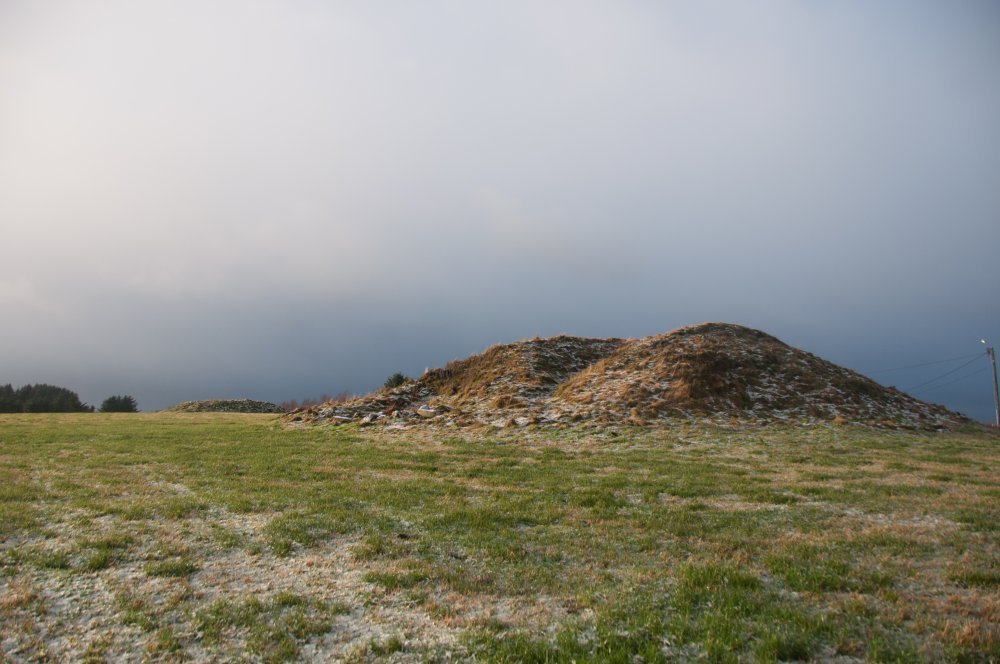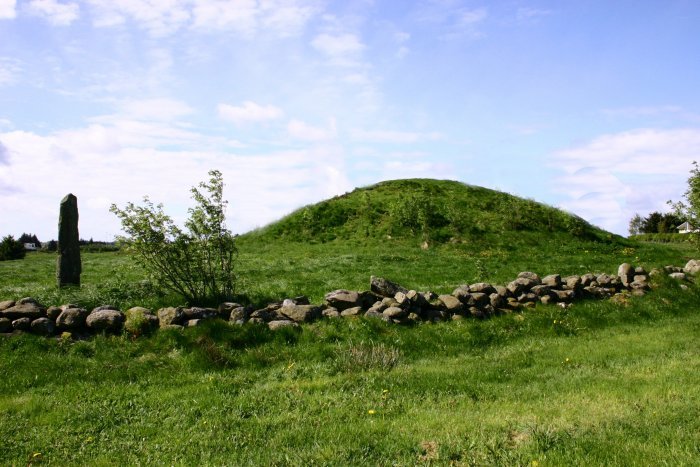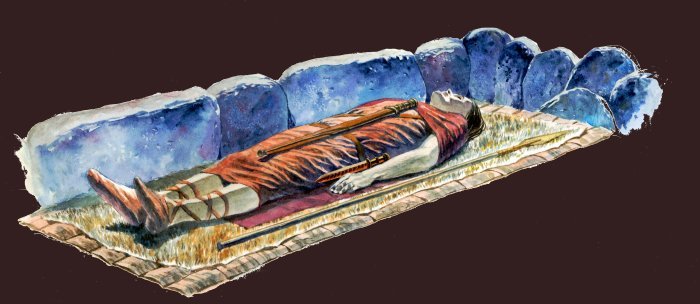Avaldsnes has been hallowed as a sacred place ever since the Bronze Age, more than 3000 years ago. At that time, man shaped the landscape here by building large burial mounds at Blood Heights. These mounds lie in a straight line from the strait of Karmsundet in the east to the ocean in the west, perhaps to let the sun god find his way over the heavens.
In 1873, over 40 graves were registered on the ridge. Only six of them are visible today. But this is still Norway’s largest cluster of Bronze Age mounds.
The people who build these burial mounds were probably originally immigrants from Denmark. They were part of a European system of trade contacts stretching from the Mediterranean to Karmsundet and from Ireland to Russia.
It was only the most prominent persons in the community who were buried in large burial mounds and cairns; ie political and / or religious leaders.
The battle of Blood Heights
The name Blood Heights comes from a terrible battle that waged here in 953. Then a Danish/Norwegian fleet led by Eirik Bloodaxe’s sons sailed up the strait of Karmsundet. They landed at Avaldsnes where they fought a bloody battle against their uncle Håkon the Good amongst the Bronze Age mounds.
The chronicler Agrip relates that three of Eirik Bloodaxe’s sons died in this battle, but Snorri only mentions Guttorm Eiriksson. Local tradition says that Guttorm was buried in Prince mound, no 2. from the east.


